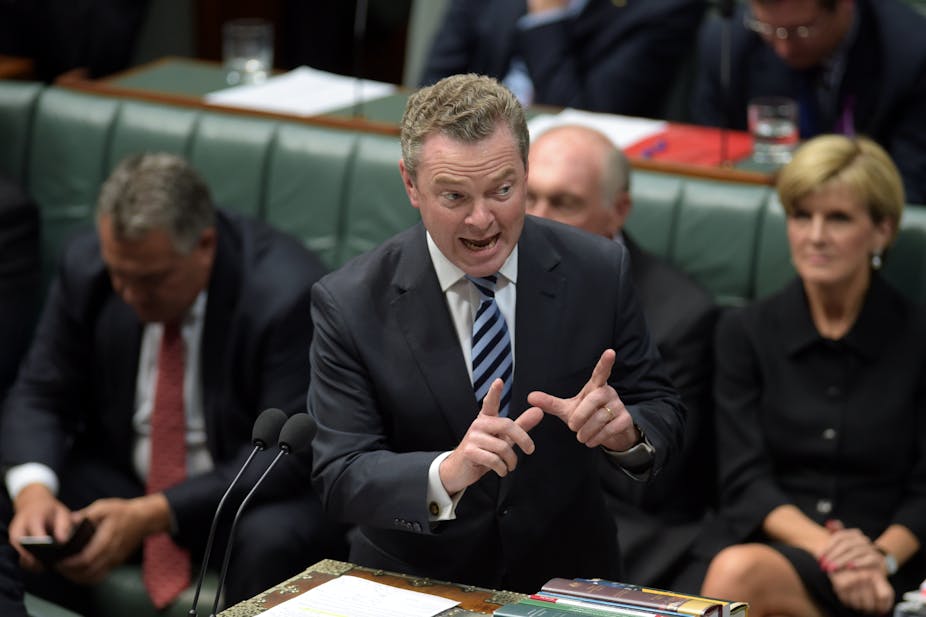Education Minister Christopher Pyne’s higher education reform package was always very ambitious. It was trying to achieve fee deregulation, major funding cuts and system expansion at the same time. With an impending second Senate defeat, it looks like a case of attempting too much too soon.
Although fee deregulation and big funding cuts are in political trouble, the reform package contains other, less controversial, elements. These are the reforms to the demand-driven system that came from a review I conducted with David Kemp.
These proposals were designed as standalone policy changes without fee deregulation. They could still be separated into a bill on their own, along with enough savings measures to make them budget-neutral.
There were two key elements to these reforms. The first was to include diplomas and associate degrees in the demand-driven system. This means that student places for these courses would no longer be allocated to higher education institutions by the government.
Instead, universities and other higher education providers would decide how many places to offer, taking into account likely student demand. This is how the system works for bachelor-degree courses in public universities.
The second element was to make students at private universities and non-university higher education providers eligible for public subsidies. These students already have access to Youth Allowance and to HELP loans, but not to tuition subsidies. Except for some nursing and teaching students in private colleges, the government currently contributes to tuition costs only in public universities.
These distinctions don’t have any basis in clear public policy principles. They are the system’s historical quirks.
Universities descended from institutions that were publicly funded in the 1980s are still there today. Institutions that were privately funded then or founded since the 1980s remain outside the public funding system. Their students (literally) pay for this history.
Grattan Institute research suggests that bachelor degree students at non-university higher education providers pay fees of nearly A$15,000 a year on average. That’s about 50% more than the highest student contribution in public universities. More than 50,000 undergraduates outside the public university system are affected by their institution’s exclusion from the funding system.
Students from low socio-economic backgrounds are among those paying these higher fees. Department of Education statistics provided to the demand-driven review indicated that 14% of full-fee paying students come from disadvantaged backgrounds.
The more than 130 private universities and non-university higher education providers give Australia’s higher education system needed diversity. They are the largest providers of pathway colleges, which help the lower-ATAR students now entering higher education.
They offer smaller campuses and classes, appealing to students wanting a more personalised form of education than public universities can easily provide.
The main reason given for opposing opening up the higher education system are problems in the vocational education system. A Senate inquiry is currently investigating problems with poor-quality courses and inappropriate lending through VET FEE-HELP, a HECS-like income-contingent loan system.
There may be lessons we can learn from the vocational education experience. But there are good reasons for thinking that higher education is different. FEE-HELP started in higher education four years before VET FEE-HELP commenced. Despite this longer history, there are few claims of misconduct.
In anticipation of potential quality issues with demand-driven funding, the previous government created a tough new higher education regulator. It is going through a process of examining compliance with the government’s higher education standards.
Some providers have been forced out or decided not to re-register. Those who remain face regular risk monitoring and detailed quality examination every few years.
In vocational education, regulatory reform was running behind changes to funding policy. The rules have been tightened as problems emerged and the main regulator is working hard to deal with bad behaviour. But it is inherently more difficult to deal with around 5000 vocational education providers than the fewer than 200 higher education providers.
As was assumed with the original demand-driven review, expanding the system needs to be budget-neutral. In a Senate inquiry submission, I suggested ways of achieving this, mostly through changes to the HELP loan scheme that I believe are desirable in any case.
No crossbench senator has publicly opposed extending the demand-driven system. While Labor is saying it is against, I doubt it would repeal it once in office. It would be hard for Labor to explain why low socio-economic background students should go back to paying full fees.
Putting the demand-driven extension into a separate bill opens the way to achieving something in this reform round. It is sensible, incremental reform, which improves on the status quo. It would be a great shame if trying to achieve too much meant that we achieved nothing at all.

